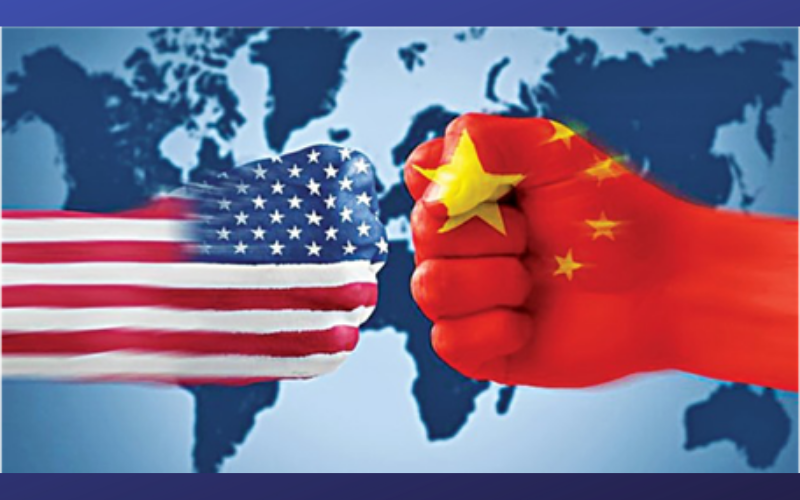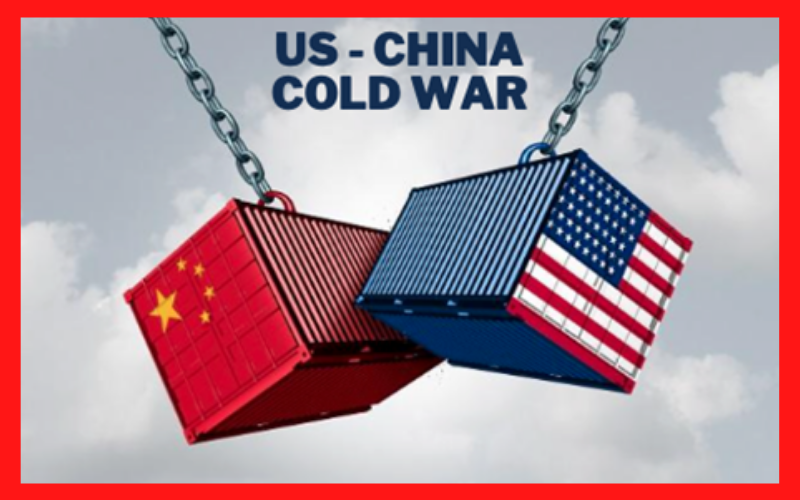
2021 will be the 100 year anniversary of the Chinese Communist Party (CCP). The Party held its very first meeting at a house in the Shanghai French Concession in 1921. Thirteen people attended but in true rebel form, the gathering was broken up by French police and later moved to a tourist boat. China has come a very long way since then, transforming itself from a poverty stricken nation to the world’s second largest economy and all throughout that time the CCP maintained its grip on power.
According to the UK’s Center of Business and Economic Research, in a mere 7 years from now China will leap past the US to become the world’s largest economy. Despite the myriad of disagreements between the two countries the two superpowers will need to find a way to repair the relationship if both are to prosper going forward.

Some will argue that there was a cold war between the US and China over the last 4 years. Both countries hit the other with harsh tariffs, sanctions and investment bans but in reality, most of the actions were just political theater. The two countries are far more interdependent on each other than the US and U.S.S.R. Despite the harsh rhetoric of the past 4 years, the U.S. -China trade deficit expanded to record size as Americans continued to buy Chinese goods while China did a better job of restricting local purchases of US goods. The Biden Administration made it clear that they will not go soft on China but America’s isolationist policy will no longer work because the race for economic superpower is one that the US can’t lose and China is desperate to win so both parties will have to learn how to cooperate and compete more effectively.

The High Tech Battle Begins
America remains the global leader in technology and medical science but China is trying hard to close the gap. The country views its dependence on US intellectual capital as a key national security issue and has made great strides in achieving its own scientific prowess.
The country went on a diplomatic offensive this past year offering medical and financial assistance to developing countries around the world. This will go a long way in boosting its influence in Asia, the Middle East and Africa. Asian nations are pulled towards China but medical and technological industries will become a major battleground. China was one of the first countries to produce and disseminate its COVID-19 vaccine domestically and internationally solidifying their status as a leading force in fighting infectious diseases. Yet the greatest threat to US technological dominance is China’s control of rare earth minerals and that may present some interesting opportunities for investors this year.

Indices – S&P 500 – Recovery Will Be Good for All
Regardless of who is on top, the “battle” will be won through development and global growth which is good for the markets. Even without this competition, 2021 should be a good year for stocks and #SPX in particular could rally 500 to 600 points from beginning of the year levels. Companies and individuals hoarded cash in 2020 and they are ready to spend. At the end of last year the US personal savings rate hit 13% and while this is lower than the 33% savings rate in April, it is at the highest in 40 years. S&P 500 companies also hold a record amount of cash and once pandemic concerns ease, consumer discretionary stocks will perform particularly well leading to earnings growth for corporate America. Before that happens, Main Street will be getting more fiscal stimulus support so even if stocks correct at the start of the year, investors should look to buy on dips rather than sell into the decline.

Stocks – Rare Earth Companies Could Benefit From US/China Battle
Rare earth metals are a sore point for the US. Almost all of the technology that we use on a daily basis requires these metals but China controls nearly 90% of global supply. The US is desperate to reduce its reliance on China because to this day, they supply 80% of the US’ rare earth needs. Knowing this advantage could disappear, China wants to move up the production chain so earlier this year they moved to tighten export controls of rare earth metals. Reducing reliance on China is a major US priority that means rare earth companies could see heavy investment in the coming years. The new stimulus package signed by President Trump at the end of 2020 includes over $800 million to fund rare earths and strategic minerals research. Companies like MP Materials (#MP) and Energy Fuels Inc (#UUUU) could stand to benefit greatly.

Currencies – Buy Chinese Yuan #USDCNY and Korean Won #USDKRW
Taking China out of the equation, aggressive fiscal spending, growing twin deficits, less protectionism and stronger risk appetite means a weaker US dollar in 2021. As the recovery gains traction, inflation will rise, the yield curve will steepen, leading to an unwinding of precautionary dollar long positions. But what currencies should you buy? The most attractive candidates are the ones with surpluses and the ones in better COVID-19 positions. Few countries have as strong of a trade surplus as China. 2021 will also be a year of recovery for China and having started their recovery sooner than the US, central bank policies are no longer focused on easing. So between a strong recovery, trade surplus, less stimulus and an ongoing goal of exchange rate flexibility, the Chinese Yuan could appreciate further in the coming year.
The Korean Won is also a hot currency that stands to benefit from recovery in China and the US. South Korea has a very low coronavirus rate, and is a major semiconductor economy that is friendly with both countries. Companies around the world are increasing technology investments, which will boost memory chip demand but gains will also be seen in South Korea’s auto and financial sectors. With emerging market flows down $73 billion last year, demand for 5 G technology makes South Korea a particularly attractive economy and its currency a strong buy. We see a 5 to 7 percent appreciation in KRW in 2021 that should drive #USDKRW to 1,200 by year end.

Commodities – Buy Crude #CL1
OPEC+ had no choice but to cut production in 2020 amidst weak demand, driving oil prices to historic lows but competition between the US and China and the broader global recovery will lead to a strong recovery in the coming years. Unlike the other opportunities this may be more of a H2 trade because slow vaccine rollout and ongoing lockdowns may hamper a near term recovery in oil. Still demand is expected to return to pre-pandemic levels and when that happens we could see Brent hit $65 a barrel and WTI #CL1 hit $58 a barrel.





